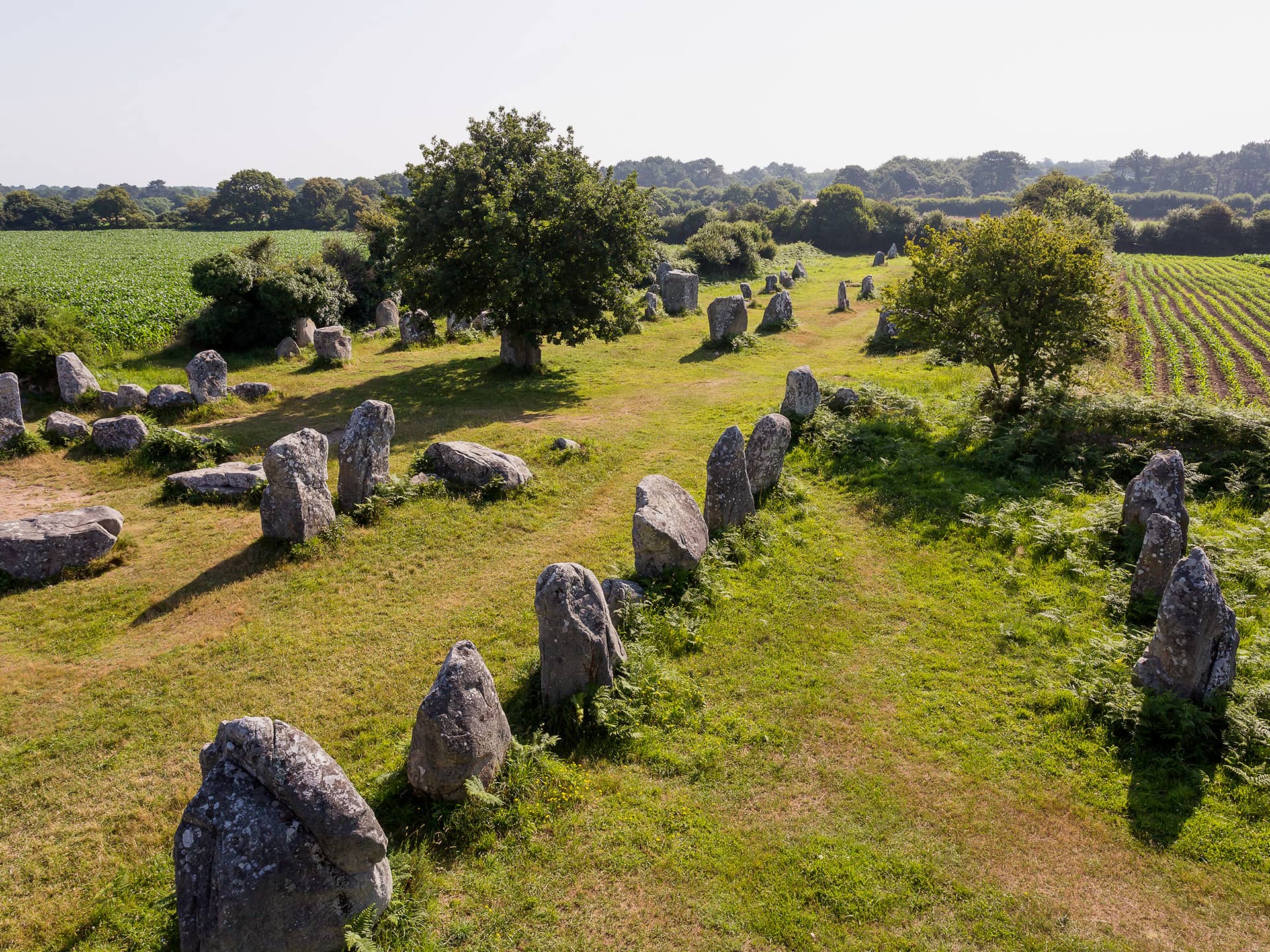When Christophe-Paulin de La Poix de Fréminville was travelling around the region in the early nineteenth century, he described Erdeven Plain as being “uncultivated, covered with moorland and heather. There are alignments of stones similar to those at Karnac as far as the eye can see.” By his reckoning, many of the stones in the nine parallel rows he could make out had been destroyed, and he further noted that many stones were lying on the ground. After being purchased by the French state, the Kerzerho menhirs were re-erected in 1884.
Today, two distinct groups can be seen. One, to the south, comprises some 180 granite menhirs, around sixty of which are lying on the ground, arranged in alignments of 10 east-west rows either side of the road. The other is a stone row running south-south-west to north-north-east located 80 metres north of the first group, comprising very large granite menhirs, some standing and some lying on the ground, known as the “giants of Kerzerho”. This set extends 4 kilometres into Varquez Wood to the east.
This is one of the major stone row sites in the area and has been a listed historic monument since the late nineteenth century.

©FanchGalivel/PaysagesdeMégalithes
